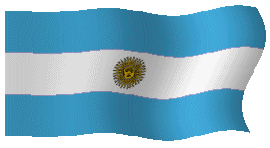
B"H
Jewish  Tours
Tours
 Buenos Aires, Argentina
Buenos Aires, Argentina

|
What is Travelers’ Choice?
Tripadvisor gives a Travelers’ Choice award to accommodations,
attractions and restaurants that consistently earn great reviews
from travelers and are ranked within the top 10% of properties
on Tripadvisor.
¿Qué es el premio Travellers' Choice?
Tripadvisor les otorga el premio Travellers' Choice a los
alojamientos, las atracciones y los restaurantes que
consistentemente reciben excelentes opiniones de los
viajeros y que se clasifican dentro del 10% de los
establecimientos más populares en Tripadvisor.
|

Vilna During the Holocaust
Outbreak of World War II – September 1939
Beginnings of the Jewish Community
The Interwar Period
During the
Holocaust
June 1941 - German Occupation of Vilna
Daily Life in the Vilna
Ghetto
Final Days of the Vilna Ghetto
Jewish Partisans in Vilna
The
Jewish Community of Vilna after World War II
Members of the Hashomer
Hadati(Religious Guard) kibbutz in Vilna, 20 June 1940
Members of the
"Hashomer Hadati" (Religious Guard) kibbutz in Vilna, 20 June 1940
Members of
the Dror youth movement, Vilna, 1940
Members of the "Dror" youth movement,
Vilna, 1940
Gregory Szur (Scurr), his wife Jocha and their children Miriam
and Aharon
Vilna under Lithuanian and Soviet rule: 19 September 1939 – 22
June 1941
The Red Army captured Vilna on the 19th of September 1939. On the
10th of October it was made known that Vilna was to be transferred to
independent Lithuania. Free movement to Vilna was possible until the end of
October and thousands of Jews took advantage of the opportunity and moved from
Polish territory, which was under Soviet rule, to Vilna. Among them were the
leaders of the Zionist parties, youth movement members and yeshivas together
with their Rabbis. The border between Lithuania and the Soviet Union was closed
in mid-November 1939. From that point on the border could only be crossed
illegally.
In the eight months of Lithuanian rule, 12,000 – 15,000 Jews fled
to Vilna, predominantly from Polish areas captured by the Soviets, among them
over 2,600 members of Zionist youth movements. Vilna was a hub of diverse Jewish
activity and became an important Jewish centre; maintaining links with Jewish
centres both in Lithuania and around the world including the communities in
Soviet territory and communities in Poland under Nazi rule. Representatives of
the Jewish political parties, the Zionist leadership and yeshiva students of
were all concentrated in Vilna. The collected leadership of the youth movements
in Vilna – Hanoar Hatzioni, Hashomer Hatsair and Dror Hechalutz - organised an
umbrella organisation, "The Coordination of Pioneering Youth Movements". The
Coordination helped its members to obtain certification, accommodation and
employment and also organised the distribution of immigration permits to Eretz
Israel. Approximately a thousand Jews left Vilna during the period of Lithuanian
rule.
The Lithuanian government allowed and even assisted cultural Jewish
activities. Three daily Jewish newspapers were published in Vilna and a Jewish
Historical Committee was established to collect witness testimonies and evidence
of antisemitic activity in the areas of Poland under Nazi occupation.
In
mid-June 1940 Vilna was transferred to the Soviet Union and the widespread
Jewish activity was brought to a stop. On the first of July 1940 all movements
and political parties, other than the Communist party, were declared illegal.
Jewish and Zionist institutions were closed and Bundist Jews, Zionists and
anyone defined as "Bourgeois" were exiled to the depths of the Soviet Union,
where many were imprisoned in camps. The youth movements continued their
activities underground. For the most part, the individual movements acted
independently and the "Coordination" ceased to exist. Jewish refugees from
Poland began leaving Vilna, with permission of the Soviet authorities and with
the assistance of the Japanese Consul Sempo Sugihara, the Dutch Consul Jan
Zwartendijk and the British Consul Gant, who issued visas to Eretz Israel.
During the Soviet period, approximately 4,000 Jews succeeded in leaving Vilna.
Some reached Eretz Israel via Moscow and Shanghai, others travelled through
Moscow, Odessa and Turkey. Among them were around 130 graduates of the Zionist
youth movements, some with legal papers and others with papers that had been
forged for them at the movements' headquarters in Vilna.
|
Visite nuestro sitio/Visit our home page: |